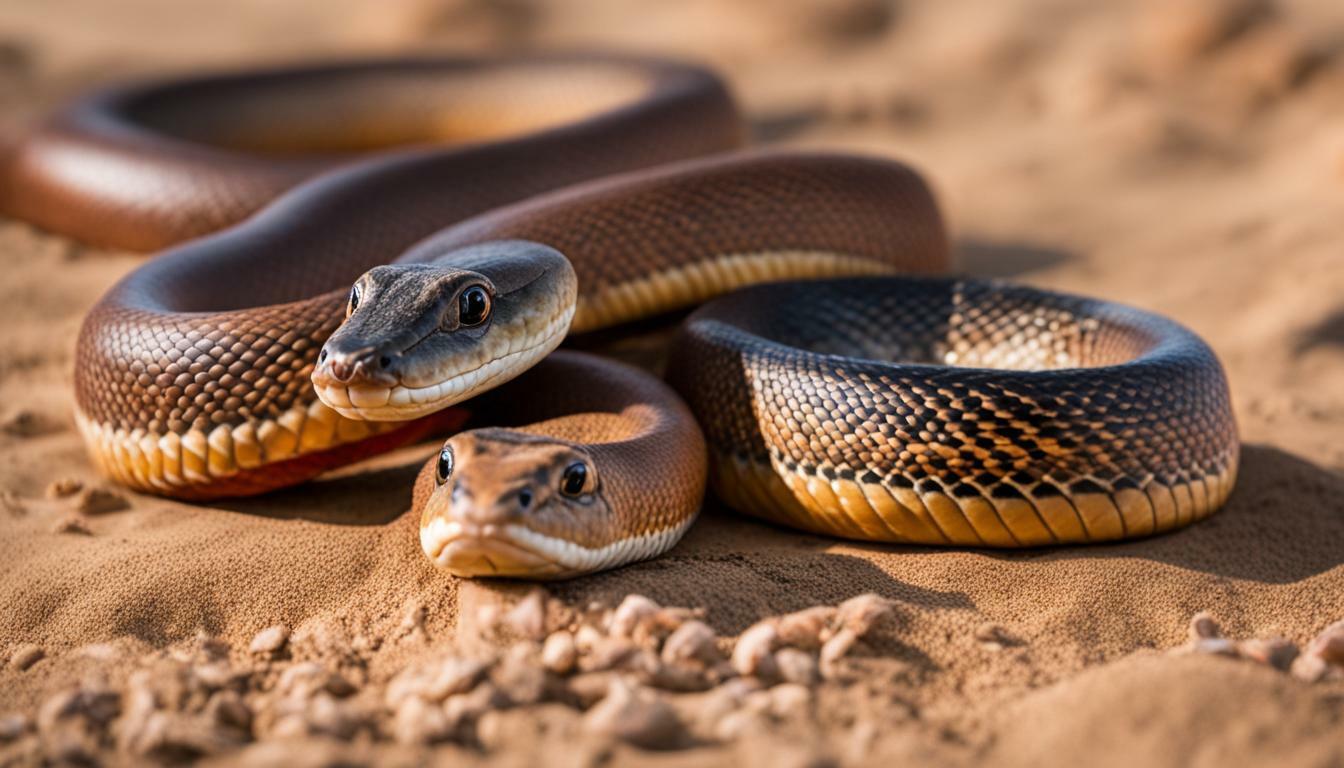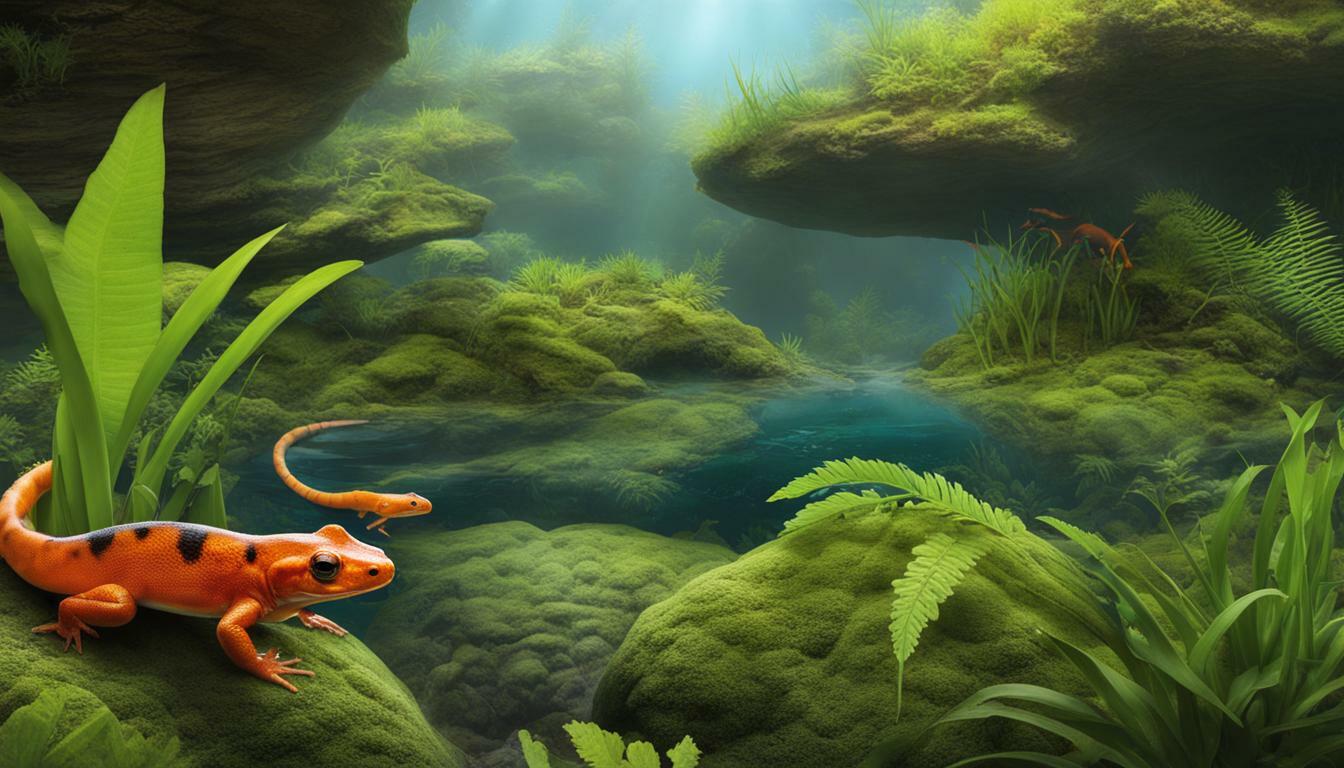Death adders and adders are both intriguing reptiles, but they differ significantly in various aspects, ranging from their venomous nature to their physical characteristics. The death adder, scientifically known as Acanthophis, is a highly venomous snake native to Australia, New Guinea, and nearby islands. It is often mistaken for an adder due to its viper-like appearance, but it actually belongs to the cobra family, Elapidae. Unlike most snakes, death adders do not actively hunt but lie in ambush, using their tail tip to lure prey. They primarily feed on lizards, frogs, and small mammals. The death adder has long, mobile fangs and injects a potent venom that paralyzes and coagulates the blood. Bites from death adders can be lethal if left untreated. The death adder reproduces through live birth, with an average litter size of 20 young. Two additional species of death adders are recognized, namely the desert death adder and the northern death adder. Both have distinct features and inhabit different regions of Australia.
Key Takeaways:
- Death adders and adders differ significantly in various aspects.
- Death adders are highly venomous snakes belonging to the cobra family.
- Unlike most snakes, death adders lie in ambush to catch their prey.
- Death adders primarily feed on lizards, frogs, and small mammals.
- Death adders inject a potent venom that can be lethal if left untreated.
Venom and Characteristics
One of the primary distinctions between death adders and adders lies in their venomous abilities and distinctive characteristics. The death adder, scientifically known as Acanthophis, is a highly venomous snake native to Australia, New Guinea, and nearby islands. It is often mistaken for an adder due to its viper-like appearance, but it actually belongs to the cobra family, Elapidae. Unlike most snakes, death adders do not actively hunt but lie in ambush, using their tail tip to lure prey.
When it comes to venom, both death adders and adders possess potent venom, but the composition and effects differ. The death adder has long, mobile fangs that are capable of injecting a potent venom into its prey. This venom is highly neurotoxic, paralyzing the victim’s nervous system and causing respiratory failure. Additionally, the venom contains anticoagulant properties, leading to the coagulation of the blood. Bites from death adders can be lethal if left untreated.
On the other hand, adders, which are a type of viper, possess a venom that is primarily haemotoxic. This means that the venom targets the victim’s blood cells and tissues, causing swelling, tissue damage, and potentially life-threatening complications. While adders also have venomous capabilities, their venom is generally less potent than that of the death adder.
| Snake Species | Venom Type | Effects |
|---|---|---|
| Death Adder | Neurotoxic and Anticoagulant | Paralyzes the nervous system and causes coagulation of the blood |
| Adder | Haemotoxic | Targets blood cells and tissues, leading to swelling and tissue damage |
Habitat and Geographical Distribution
Death adders and adders have adapted to different habitats and can be found in distinct regions around the world. Let’s take a closer look at where these venomous snakes reside.
The death adder, belonging to the Elapidae family, is native to Australia, New Guinea, and nearby islands. Within Australia, it can be found in various regions, including the eastern states of Queensland and New South Wales, as well as the northern state of Western Australia. These snakes inhabit a range of environments such as woodlands, grasslands, and even coastal areas. However, they show a particular preference for areas with dense vegetation, which provides ideal cover for their ambush hunting strategy.
On the other hand, adders are a type of viper snake and are primarily found in the Northern Hemisphere. They are distributed across Europe, Asia, and even parts of Africa. Within Europe, adders can be found in countries such as the United Kingdom, Sweden, and Germany. These snakes are highly adaptable and can thrive in a variety of habitats, including forests, heathlands, meadows, and even mountains. They are also known to inhabit coastal areas, making their home in sand dunes and rocky landscapes.
| Death Adders | Adders |
|---|---|
| Australia, New Guinea, nearby islands | Europe, Asia, parts of Africa |
| Woodlands, grasslands, coastal areas | Forests, heathlands, meadows, coastal areas |
| Dense vegetation for ambush hunting | Various habitats including sand dunes and rocky landscapes |
As demonstrated, the habitat preferences and geographical distributions of death adders and adders greatly differ. While death adders are confined to the Australasian region, adders have managed to adapt and thrive in different parts of the Northern Hemisphere. Understanding their respective habitats plays a crucial role in encountering and appreciating these fascinating snakes in their natural environments.
Appearance and Behavior
Despite their superficial similarities, death adders and adders possess distinct physical features and exhibit different behaviors. The death adder, with its sleek and viper-like appearance, can often be mistaken for an adder. However, it actually belongs to the cobra family, Elapidae. It has a relatively short and stout body, averaging around 0.8 meters in length, and features a triangular-shaped head with large eyes. The death adder’s coloration varies, but it typically displays a combination of browns, grays, and reds, providing effective camouflage in its natural habitat.
On the other hand, true adders, such as the common European adder, are part of the Viperidae family. They have a more robust body, measuring around 0.5 to 0.7 meters in length, and a distinctive zigzag pattern running down their back. Adders come in a range of colors, including shades of brown, gray, and olive green, allowing them to blend into their surroundings.
In terms of behavior, death adders employ a unique hunting technique. Instead of actively pursuing their prey, they lie in ambush, perfectly camouflaged among the leaf litter or sand. They use their tail tip, which resembles a worm, to entice unsuspecting prey. Once an animal approaches, the death adder strikes with incredible speed, injecting a potent venom into its victim. This venom, which affects the nervous system and blood coagulation, quickly incapacitates the prey.
Adders, on the other hand, are known for their shy and docile nature. They prefer to avoid confrontation and will only bite in self-defense if threatened. Despite their venomous bite, adders are generally non-aggressive towards humans and will typically flee when encountered. They primarily feed on small mammals, such as voles and mice, as well as lizards and amphibians.
| Death Adder | Common Adder |
|---|---|
| Belongs to the cobra family, Elapidae | Belongs to the viper family, Viperidae |
| Triangular-shaped head with large eyes | Distinct zigzag pattern on the back |
| Short and stout body, around 0.8 meters in length | Robust body, measuring 0.5 to 0.7 meters in length |
| Coloration varies, typically in shades of brown, gray, and red | Range of colors including brown, gray, and olive green |
| Lies in ambush, using tail tip to lure prey | Non-aggressive, bites only in self-defense |
| Injects potent venom to paralyze prey | Primarily feeds on small mammals, lizards, and amphibians |
Diet and Feeding Habits
Death adders and adders have specific dietary requirements and employ different feeding strategies to secure their meals. The diet of a death adder primarily consists of lizards, frogs, and small mammals. Being an ambush predator, the death adder lies in wait patiently, camouflaging itself amongst its surroundings. When unsuspecting prey comes near, the death adder strikes with lightning speed, injecting its venom into the prey’s body. The venom rapidly immobilizes the prey, allowing the death adder to consume its meal at leisure.
Adders, on the other hand, have a broader diet that includes small mammals, birds, and even other snakes. Unlike the death adder, adders are actively foraging hunters. They use a combination of stealth, speed, and precision to catch their prey. Adders possess a unique heat-sensing organ, known as the pit organ, which helps them locate warm-blooded prey. Once an adder spots a potential meal, it strikes and grabs hold of its prey, injecting venom to incapacitate it. Adders then swallow their prey whole, utilizing their flexible jaws to accommodate their meal.
It is important to note that both death adders and adders play vital roles in maintaining ecological balance by controlling populations of small mammals and reptiles. Their feeding habits contribute to the overall health of their respective habitats by regulating prey populations and ensuring a balanced ecosystem.
Dietary Comparison: Death Adders vs. Adders
| Death Adders | Adders |
|---|---|
| Lizards | Small mammals |
| Frogs | Birds |
| Small mammals | Other snakes |
Conclusion
In conclusion, death adders and adders share certain resemblances, but their differences in venom, habitat, appearance, behavior, diet, and distribution make them distinct and fascinating reptiles.
The death adder, scientifically known as Acanthophis, is a highly venomous snake that belongs to the cobra family, Elapidae. It is often mistaken for an adder due to its viper-like appearance, but its unique characteristics set it apart. Unlike most snakes, death adders do not actively hunt but lie in ambush, using their tail tip to lure prey. They primarily feed on lizards, frogs, and small mammals. Their long, mobile fangs inject a potent venom that paralyzes and coagulates the blood, making their bites potentially lethal if left untreated. Death adders reproduce through live birth, with an average litter size of 20 young.
On the other hand, adders are a different species altogether. While death adders are found in Australia, New Guinea, and nearby islands, adders are widespread throughout Europe, Asia, and North Africa. They have distinct habitat preferences, with death adders inhabiting a range of environments from forests to deserts, while adders favor grasslands, heathlands, and woodlands. Adders also have a different diet, consuming a variety of small mammals, birds, and reptiles.
Additionally, death adders and adders have different physical appearances and behaviors. Death adders possess unique traits that allow them to camouflage and blend in with their surroundings, making them highly effective ambush predators. Adders, on the other hand, have distinctive viper-like heads, triangular in shape, and a zigzag pattern along their backs.
While death adders and adders may share certain resemblances, it is their differences that make them truly fascinating creatures. From their venomous capabilities to their diverse habitats and distinguishing appearances, these reptiles showcase the wonders of nature and the variety of life on our planet.
FAQ
What is the difference between death adders and adders?
Death adders and adders may appear similar, but they are actually quite different. While adders belong to the viper family, death adders are part of the cobra family. Additionally, death adders have unique hunting behavior, relying on ambush tactics rather than actively seeking out prey.
Are death adders venomous?
Yes, death adders are highly venomous. They possess long, mobile fangs and inject a potent venom that can paralyze and coagulate blood. Bites from death adders can be lethal if not treated promptly.
How do death adders reproduce?
Death adders reproduce through live birth, giving birth to an average litter size of around 20 young.
Are there different species of death adders?
Yes, there are two additional species of death adders recognized, namely the desert death adder and the northern death adder. Each species has distinct features and inhabits different regions of Australia.
What do death adders eat?
Death adders primarily feed on lizards, frogs, and small mammals. They rely on their ambush tactics and use their tail tip to lure their prey.
 Skip to main content
Skip to main content


